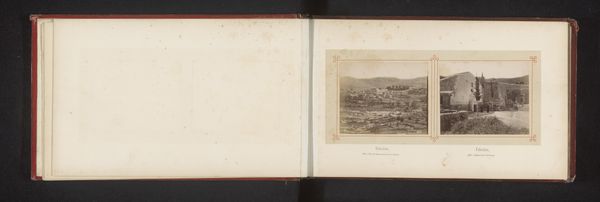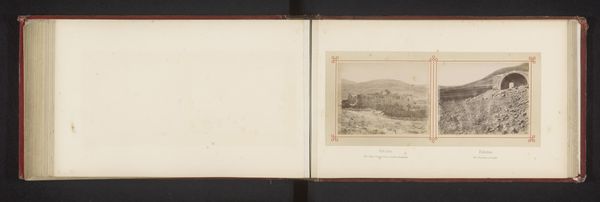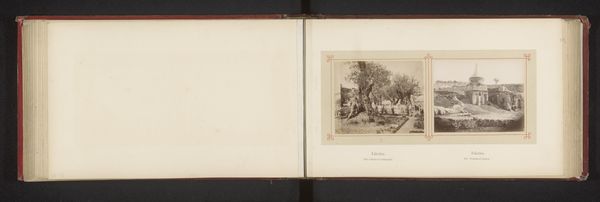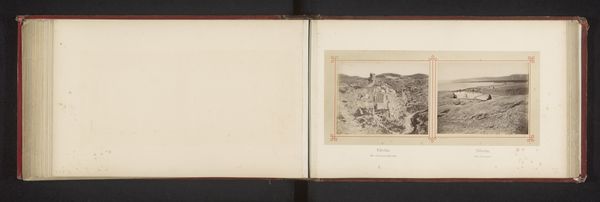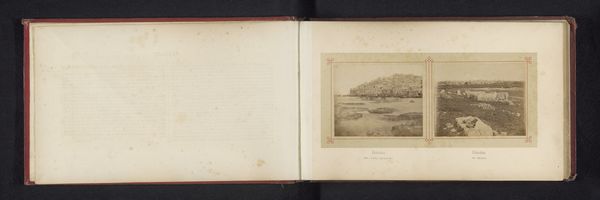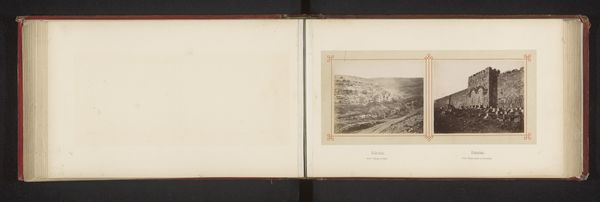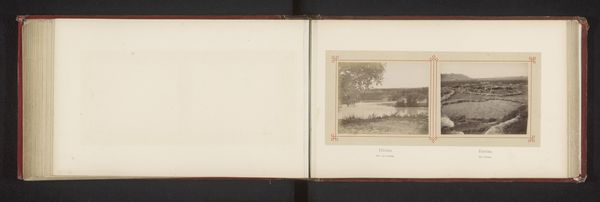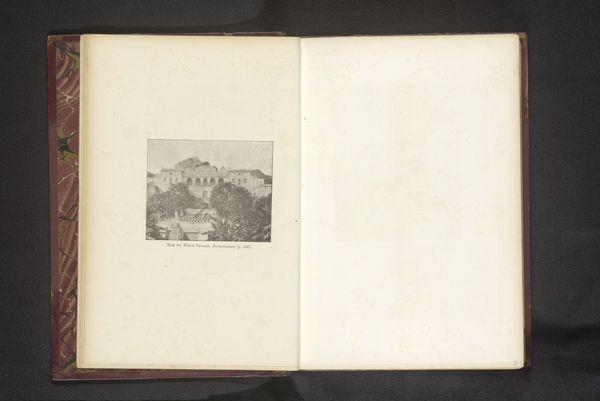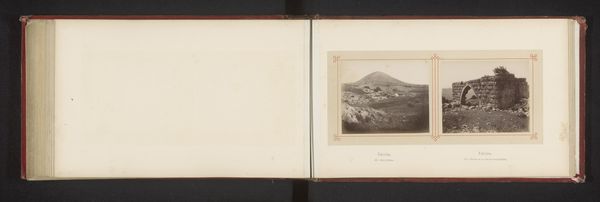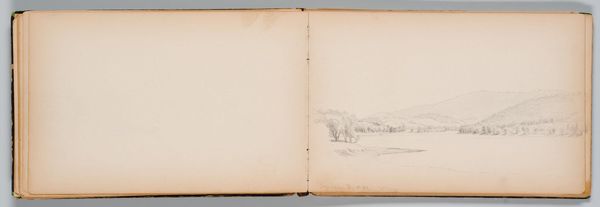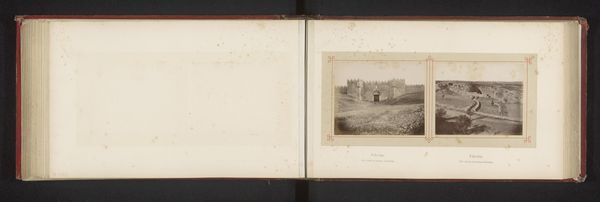
photography, albumen-print
#
landscape
#
photography
#
mountain
#
orientalism
#
watercolor
#
albumen-print
Dimensions: height 77 mm, width 95 mm
Copyright: Rijks Museum: Open Domain
Curator: Here we have a striking albumen print by Félix Bonfils, entitled "Gezicht op ruïnes van bogen voor een berg bij Jericho," or "View of ruins of arches in front of a mountain near Jericho," dating from before 1878. It’s held here at the Rijksmuseum. Editor: Immediately, I’m struck by the layering in this image. You have the crumbling architecture in the foreground, a soft green space, and then that imposing mountain in the distance. There's an evocative, melancholic air about it, the ruins whisper stories of bygone eras. Curator: Precisely. Bonfils, a key figure in the Orientalist movement, traveled extensively in the Middle East. This photography offers a Western gaze upon the region, feeding a European fascination with the "exotic Orient." Editor: And we can’t ignore that "Western gaze," can we? These images, beautiful as they may be, reinforced existing power dynamics and stereotypes. Who controlled the narrative mattered. It’s a vital question when examining Orientalist works. How did the indigenous population perceive these spaces versus how Bonfils presents them? Curator: That's absolutely right. Bonfils, while likely considering himself an objective observer, inevitably framed his subjects through a colonial lens. His work reveals the political and social context of 19th-century European expansionism, which relied on images that presented foreign lands as places both fascinating and in need of external guidance. Editor: Consider too the choice to focus on ruins. Is there an implicit statement about a civilization’s supposed decline? A subtext that justifies colonial intervention? It’s all very deliberate, isn’t it? Curator: Undoubtedly. However, also understand the materiality, the albumen print gives a richness and depth, a palpable sense of age to the image itself. The light and shadow dance across the stone. And photography, then newly emergent, shaped understanding of geography. Editor: So, even what seems to be mere "documentation" serves a larger purpose. I’ll leave our listeners with this: engage with the seductive beauty, but always, always interrogate the viewpoint. Curator: An excellent perspective. And remember that museums and galleries now grapple to reinterpret the colonial power structures that built collections such as this one.
Comments
No comments
Be the first to comment and join the conversation on the ultimate creative platform.
